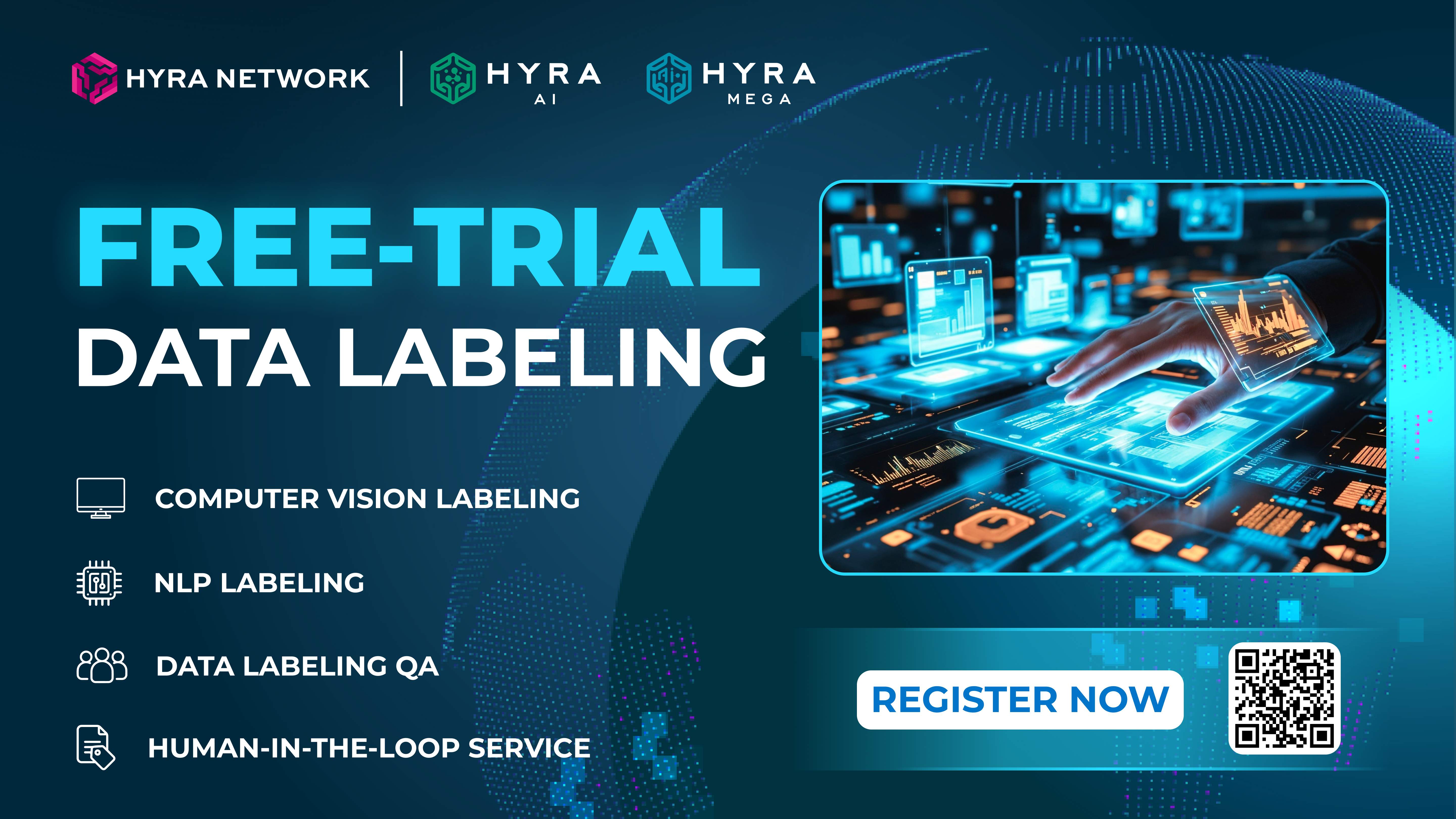
The B2B platform for the best purchasing descision. Identify and compare relevant B2B manufacturers, suppliers and retailers
Close
Filter
Result configuration
Continents
Select continent
Locations
Result types
Company type
Select company type
Industries
Select industry
Company status
Select company status preset
Number of employees
Min.
Max.
Founding year

ONTROX
Osaka, Japan
A
1-10 Employees
2010
Key takeaway
ONTROX co., Ltd. specializes in Big Data Analysis, offering services that leverage extensive data processing and analytics capabilities.
Reference
Service
Service – Big Data Analysis | ONTROX co.,Ltd.
Teradata Japan, Ltd.
Tokyo, Japan
A
10001+ Employees
1979
Key takeaway
Teradata emphasizes the transformative power of data through its advanced cloud analytics and data platform, which provides harmonized data and trusted AI/ML to enhance decision-making. With a commitment to empowering organizations across various industries, Teradata enables companies to quickly capitalize on opportunities and gain valuable insights.
Reference
Core business
Enterprise Data Analytics for a Multi-Cloud World | Teradata
Teradata Vantage is the intelligent multi-cloud data platform that understands enterprise data from any source. See why top brands trusts Teradata.

DataMesh Japan
Tokyo, Japan
A
1-10 Employees
2017
Key takeaway
DataMesh株式会社 specializes in utilizing big data through innovative solutions like mixed reality (MR) content creation and IoT integration, particularly leveraging technologies such as HoloLens for enhanced training and promotional activities.
Reference
Core business
DataMesh株式会社 ‐ MR(複合現実)×ビッグデータ
DataMesh(データメッシュ)株式会社のウェブサイトです。HoloLens(ホロレンズ)を使ったMR(複合現実)のコンテンツ制作、プロモーション・教育トレーニング・IoT連携、ビッグデータ活用などを行っています。
Looking for more accurate results?
Find the right companies for free by entering your custom query!
25M+ companies
250M+ products
Free to use
SMARTSCAPE Japan
Tokyo, Japan
A
- Employees
2003
Key takeaway
The company emphasizes the importance of effectively utilizing vast amounts of data, highlighting its integrated platform, SMARTSCAPE, which enables data-driven decision-making and problem-solving. It addresses the challenge of unutilized dark data by offering comprehensive analytics, monitoring, and operational capabilities for all types of enterprise data.
Reference
Product
データによる意思決定・課題解決プラットフォーム - SMARTSCAPE
多くの企業のデータは、依然として活用されていないダークデータのままです。Splunkはデータベースのような構造化されたデータに限らず、全ての企業を取り巻く膨大なデータを取り込み、データを活用した分析・調査・監視・運用が可能な統合データプラットフォームです。
ICONIC DATA Japan
Tokyo, Japan
A
51-100 Employees
2021
Key takeaway
ICONIC DATA is actively engaged in promoting a SaaS project that addresses corporate management challenges and enhances corporate value through automation. Their focus on data-centric solutions and innovative technologies positions them as a key player in leveraging big data for intelligent decision-making and operational efficiency.
Reference
Service
Services | ICONIC DATA
xenera
Tokyo, Japan
A
51-100 Employees
2020
Key takeaway
The company emphasizes the importance of leveraging data to gain a comprehensive understanding of business dynamics and to enhance scalability. Their focus on knowledge extraction and application development suggests a robust approach to utilizing big data for business growth and innovation.
Reference
Core business
Home | Xenera
Minedia
Tokyo, Japan
A
1-10 Employees
2018
Key takeaway
Minedia, Inc. emphasizes its expertise in technology and marketing through its EC Purchase Data Platform, which leverages zero-party data for qualitative insights and efficient data storage. This innovative approach to data management highlights the company's commitment to transforming business strategies through data-driven solutions.
Reference
Service
SERVICE | 株式会社マインディア
KPI Solutions
Osaka, Japan
A
1-10 Employees
2006
Key takeaway
The company emphasizes the transformative impact of the internet on marketing models and highlights its commitment to developing internet marketing technology. Notably, it offers a data management platform (DMP) called AD graph, which facilitates effective data-driven advertising, and utilizes big data analytics technologies powered by artificial intelligence.
Reference
Product
Technology | KPI Solutions
Egenera
Tokyo, Japan
A
101-250 Employees
2000
Key takeaway
Egenera is a cloud service provider that offers a robust Xterity Cloud platform designed to simplify the management of IT resources for organizations, making it an economical and flexible alternative to major players like Azure and AWS. Their platform, built on top-tier data centers, ensures high reliability and security, addressing common challenges related to data management and infrastructure.
Reference
Core business
Cloud Service Providers, MSP Cloud Services, ISV Cloud
Egenera's Xterity Cloud platform is the best alternative to Azure or AWS cloud. Egenera provides simple to use (IaaS) low cost cloud at a global scale with controllable and predictable costs and premium customer support experience. Get in touch to learn more!

Medical Data Vision Co.,Ltd.
Tokyo, Japan
A
51-100 Employees
2003
Key takeaway
MDV focuses on enhancing healthcare quality in Japan through the effective use of large volumes of real-world data, aligning with the growing expectations for Evidence-Based Medicine. They provide analyzed data sets related to drugs and diseases to pharmaceutical companies and research institutions, leveraging cloud-based services that allow for quick adaptations to changing medical information needs.
Reference
Service
Data-set Provision | Medical Data Vision Co., Ltd.
Technologies which have been searched by others and may be interesting for you:
A selection of suitable products and services provided by verified companies according to your search.

Product
edbic
Go to product

Service
EMCP
Go to product

Service
AI & Data platform
Go to product

Service
Data Labeling
Go to product
A selection of suitable use cases for products or services provided by verified companies according to your search.

Use case
Continuous monitoring
Manufacturing
The challenge Blickle has always prided itself on the superior quality of its wheels and castors. To further enhance this quality with modern technology, the company decided to migrate its production processes to Industry 4.0 standards. This planned transition should have minimal impact on the three-shift production operation, while maintaining flexibility and openness for future digitalization initiatives. The solution Blickle IT developed a concept to enable a sustainable and gradual transformation. At the heart of the strategy is edbic, which enables condition monitoring. Acting as a central data hub, edbic seamlessly extracts data from the machines, transfers it to the ERP system and provides full production transparency. The result With the implementation of edbic, machine data no longer reaches IT incomplete or delayed. Immediate data analysis enables rapid problem resolution. Automatic punching presses are monitored to determine output results, missing parts, quantities and more. By eliminating most of the Excel lists previously used, edbic has significantly streamlined operations. In polyurethane production, edbic identifies and corrects problems, contributing to Blickle's high quality castors and wheels. In addition, edbic is now being used beyond production, facilitating connections to payment providers in the web shop and establishing a communication link with SAP. Outlook for the future Blickle plans to further refine the system by using machine data comparison for predictive maintenance. In addition, the company is considering implementing the compacer IoT gateway to take communication between machines and the ERP system to a new level of automation.

Use case
IoT gateway and Industry 4.0 application
Industry 4.0, Manufacturing
The challenge: BURKHARDT+WEBER is renowned for its expertise in large machining centres. Headquartered in Reutlingen, Germany, the company has a global presence and supplies its products to customers around the world who place a premium on quality. For 130 years, BURKHARDT+WEBER has focused on developing state-of-the-art production solutions for the demanding machining of steel, cast iron and titanium components. The development of these machining centres is the collaborative work of interdisciplinary teams, and all essential components, as well as in-house developments, are manufactured within the company. The compacer IoT solution, built on the edbic platform, is planned for future integration into BURKHARDT+WEBER machining centres. The installation of the compacer IoT gateway enables data collection from the machine's control system. In the long term, BURKHARDT+WEBER machines will offer a wide range of data that can be examined in real time to provide a detailed overview of the machine's condition and efficiency on a dashboard. The solution: An IoT hub will process the collected data, enabling a variety of assessments and ensuring that the operator is kept informed at all times. With machines connected to the compactor solution, condition monitoring is possible, paving the way for the implementation of predictive maintenance. With this approach, BURKHARDT+WEBER enables its customers to successfully implement upcoming digital transformation projects within their production processes.

Use case
Digital retrofit at a manufacturer
Electrical installation technology
The challenge: Our customer has an individually analog 30t punching and bending machine in use, which must not be interfered with in the control process. Small hairline cracks in the large drive wheel can lead to a machine failure, resulting in a production stop. Due to the high storage costs, the spare part is not kept in stock. It can take up to three weeks to order and deliver the new part. In order to avoid a machine breakdown, it should be digitally connected to the current production environment and in future the condition of the gearwheel should be analyzed by means of condition monitoring and a breakage better predicted. Our customer's goal was therefore to make the machine IoT-ready with a digital retrofit in order to reduce machine downtimes and increase machine utilization times. The solution: Digital activation of the existing system was unavoidable, which is why sensors were initially installed by the customer to detect the gear breakage. The vBox from Fraunhofer IPT processes the sensor signals and sends the data to the compacer data platform edbic. Among other things, structure-borne noise, vibration, temperature, torque and current are measured. Increased current consumption, which can be a sign of excessive load due to friction and a lack of lubricant, is detected. However, the collected and evaluated data also reveals smaller cracks. The frequency spectrum and other values are recorded, compared and examined for outliers in real time. If an outlier, such as a crack, is detected, an alarm is generated and employees are informed. They can take action if necessary and production downtime can be avoided. Our customer: a German market leader in the field of electrical installation technology and global market leader in SCHUKO® sockets, produces at two locations in Germany and exports to more than 60 countries. In order to further expand its brand leadership and establish innovations in the smart home sector, the company is taking on new digital challenges.

Use case
Business and IoT integration in Antwerp Euroterminal
Ports
The challenge: The implementation of a new Terminal Operating System (TOS) offered our customer the unique opportunity to rethink the entire IT landscape. Accelerating the digital transformation and reducing the workload became key target definitions. The aim was to meet the ever-changing internal and customer requirements, while offering high-quality services to end customers. The most important factors were maintaining a high level of customer satisfaction and a clear commitment to maximum security. The existing system landscape had grown with the company and was therefore very heterogeneous and poorly integrated. This had led to high maintenance and administration costs. Integration projects were only implemented when necessary and integration problems were solved by in-house developments. This led to silo thinking and resulted in increasingly fragmented and isolated knowledge. It became clear that networking the respective systems with suitable tools would create immediate added value and greater transparency. In addition to the "classic" challenges of integration projects, our customer emphasized that the topic of IoT integration was very important to them. Particular attention should be paid to finding the right speed and the right tools for the changeover. A software platform that would enable them to connect their B2B partners and their applications electronically and provide a solid basis for the planned IoT integration would therefore be far ahead of all competing offerings. The solution: The customer decided to use the compacer edbic platform as a B2B/IoT gateway. The integration platform acts as a central "data hub" for our customer and the applications of its trading partners. It has since become the core of all operational and logistical flows. edbic was supplemented in a second step by edpem to introduce business process monitoring (BPM). A whole series of integration projects were implemented in a very short space of time. Some of these were "traditional" B2B projects designed to enable the exchange of EDI, XML and proprietary data with the applications of trading partners and third parties by converting and transmitting the data transparently. In addition, a large number of applications were connected via edbic. The system for shift planning and management of terminal workers was linked to the access control system for the port, enabling automated payroll and significantly relieving the HR department of day-to-day tasks. Integration with the customer's ERP environment, on the other hand, partially automated order acceptance, fulfillment and billing. New capabilities were also added, such as the generation of data records for structured test scenarios, automated access control based on shift planning and visitor appointments, and much more. However, the port operator wanted to go one step further and tackle its first IoT project. For the pilot project, sensor data from the terminal's various weighing and measuring systems was published via edbic. A typical use case is measuring the verified gross mass (VGM) to comply with SOLAS requirements. The data obtained is now automatically fed into higher-level systems such as the TOS or stowage planning for loading ships, where it is available for further processing, analysis and visualization. The network of surveillance cameras has been connected to a perimeter security system, which enables the early detection of intruders. The comparison of number recognition events (ANPR) with access control information and TOS transactions makes anomalies visible, improves traffic management and increases security - a key concern in port terminals. All of this is controlled by edbic. This new level of digitalization makes everyday terminal logistics easier and significantly increases the efficiency of the port.

Use case
EDI in electronics wholesale
Wholesale
The challenge: Due to a lack of transparency in communication, there are always gaps in the transfer of know-how between the active shareholders. A standardized communication structure between customers and business partners must therefore be established. Among other things, this should also contain information on delivery information and ensure greater transparency within the business processes. One challenge, for example, was the lack of visibility of goods availability, which needed to be resolved. The solution: In addition to establishing central IT services, the aim was to create a modern communication concept for Europe-wide business processes using EDI so that all shareholders in Europe can access all data in a shared database. compacer was commissioned to develop, set up and operate a fully integrated B2B industry platform for the group of companies. In addition to the EDI component with integrated supplier onboarding portal, this was also to cover the topic of e-invoicing. An e-invoicing platform was to be established that implements e-billing, signed PDF, e-mail distribution and ZUGFeRD in practice. Our customer: is a market community in electrical wholesale and a group of companies that operates internationally in 26 countries. More than 230 independently cooperating electrical wholesalers now belong to the association. Almost every shareholder is an independent family business. The aim is to strengthen the future of wholesalers. That is why the company's focus is also on cooperation with the individual manufacturers. This is also the reason why a central e-commerce platform had to be set up and expanded.

Use case
Replacement of Legacy Systems
Logistics
The challenge: Our customer was in a very difficult situation: the existing data integration software was outdated, extensions from the provider were no longer possible and support for the software had also been discontinued. As a result, they were looking for a successor that would meet the criteria for a modern data and integration platform, e.g. through web services, and enable a high data throughput. The decisive factor for the customer was full integration into the IBM/AS400/DB2/MQ system environment while adhering to the specified budget and schedule and the modernization and development of a data integration platform for EDI services as a group application with separate systems for development and testing. The solution: The decisive arguments for choosing compacer were, on the one hand, the price and also the time savings that compacer had estimated for the migration project with its model-based and automated project approach. Even the customer's internal service provider would not have been able to implement this in this time frame or with the budget that had been included. On the other hand, the customer was also impressed by the diverse possibilities and flexibility of the compacer data and integration platform edbic during an on-site reference appointment. The migration not only involved the automated porting of around 1,500 mappings and the associated EDI message connections, but also 2,400 partner connections, with the premise that this should have no impact on the connected business partners. Result: Thanks to our model-based project method and close-meshed project controlling, we were easily able to keep to the project timeframe and the specified budget in this migration project. This also made it possible for us to provide the customer with flexible support wherever possible, absorb work peaks on the customer side and gradually take on additional tasks for the customer. We saw this as a great vote of confidence. But it was not only the compacer project method and the successful cooperation that had a positive influence on the speed of the project. Thanks to our established, model-based approach and the automation by means of tool-supported porting of message structures and processes, conversion times and manual sources of error were drastically reduced. This has reduced the migration and testing effort by 80% to 90% compared to the usual manual approach. By using the compacer data integration platform edbic, our customer can now set up processes more easily in day-to-day operations, reuse modules and monitor processes and their interaction more effectively. This significantly increases IT efficiency. The system load is currently 2 million data records per working day (8 hours) and a peak load of 1 million/hour, whereby the system is designed for up to 7 million data records per day. The customer was impressed not only by the flexibility and adaptability of the platform, but above all by its speed. The next step is to implement the diverse possibilities of web services with edbic.

Use case
Demand forecasting
Supply Chain
Demand Forecasting with Thaink²: Predict with Confidence One of the most powerful use cases of Thaink² is demand forecasting, enabling businesses to predict future demand with precision, optimize resources, and reduce inefficiencies. How It Works 🔹 Data Integration – Thaink² automatically centralizes data from multiple sources (ERP, CRM, sales reports, external factors like weather, market trends, etc.). 🔹 AI-Powered Forecasting – Our machine learning models analyze historical data and external influences to generate highly accurate demand predictions. 🔹 Scenario Simulation – Businesses can test different scenarios (e.g., seasonal changes, pricing strategies, supply chain disruptions) to make informed decisions. 🔹 Automated Insights & Alerts – Real-time dashboards highlight trends, anomalies, and actionable insights, ensuring proactive decision-making. Business Impact ✅ Optimized Inventory – Reduce overstock and stockouts, ensuring the right products are available at the right time. ✅ Improved Supply Chain Efficiency – Align procurement, production, and logistics with actual demand forecasts. ✅ Revenue Growth – Increase sales by anticipating customer needs and adjusting strategies proactively. ✅ Cost Reduction – Minimize wastage and unnecessary storage costs by accurately planning stock levels. Whether you’re in retail, manufacturing, or logistics, Thaink²’s demand forecasting capabilities empower businesses to stay ahead of market trends, mitigate risks, and maximize profitability.

Use case
Continuous monitoring
Manufacturing
The challenge Blickle has always prided itself on the superior quality of its wheels and castors. To further enhance this quality with modern technology, the company decided to migrate its production processes to Industry 4.0 standards. This planned transition should have minimal impact on the three-shift production operation, while maintaining flexibility and openness for future digitalization initiatives. The solution Blickle IT developed a concept to enable a sustainable and gradual transformation. At the heart of the strategy is edbic, which enables condition monitoring. Acting as a central data hub, edbic seamlessly extracts data from the machines, transfers it to the ERP system and provides full production transparency. The result With the implementation of edbic, machine data no longer reaches IT incomplete or delayed. Immediate data analysis enables rapid problem resolution. Automatic punching presses are monitored to determine output results, missing parts, quantities and more. By eliminating most of the Excel lists previously used, edbic has significantly streamlined operations. In polyurethane production, edbic identifies and corrects problems, contributing to Blickle's high quality castors and wheels. In addition, edbic is now being used beyond production, facilitating connections to payment providers in the web shop and establishing a communication link with SAP. Outlook for the future Blickle plans to further refine the system by using machine data comparison for predictive maintenance. In addition, the company is considering implementing the compacer IoT gateway to take communication between machines and the ERP system to a new level of automation.
When exploring the Big Data industry in Japan, several key considerations come into play. First, understanding Japan's regulatory landscape is crucial, as the country has strict data protection laws, including the Act on the Protection of Personal Information (APPI). Companies must navigate these regulations to ensure compliance. Additionally, the competitive landscape is robust, with both domestic firms and international players vying for market share. This competition drives innovation but also presents challenges in differentiation. Opportunities abound in sectors such as healthcare, finance, and manufacturing, where data analytics can significantly enhance efficiency and decision-making. However, the industry faces challenges, including a shortage of skilled professionals and the need for advanced infrastructure to handle large data volumes. Environmental concerns related to data centers and energy consumption are increasingly relevant as sustainability becomes a priority for businesses. Japan's unique cultural context also influences data usage, with a strong emphasis on consumer privacy and the ethical implications of data utilization. Moreover, as the global market for Big Data continues to expand, Japan's position as a technological leader offers avenues for collaboration and investment. Overall, thorough research into these factors will provide valuable insights for anyone looking to engage in the Big Data industry in Japan.
Some interesting numbers and facts about your company results for Big Data
| Country with most fitting companies | Japan |
| Amount of fitting manufacturers | 15 |
| Amount of suitable service providers | 15 |
| Average amount of employees | 51-100 |
| Oldest suiting company | 1979 |
| Youngest suiting company | 2021 |
Some interesting questions that has been asked about the results you have just received for Big Data
What are related technologies to Big Data?
Based on our calculations related technologies to Big Data are Big Data, E-Health, Retail Tech, Artificial Intelligence & Machine Learning, E-Commerce
Which industries are mostly working on Big Data?
The most represented industries which are working in Big Data are IT, Software and Services, Other, Consulting
How does ensun find these Big Data Companies?
ensun uses an advanced search and ranking system capable of sifting through millions of companies and hundreds of millions of products and services to identify suitable matches. This is achieved by leveraging cutting-edge technologies, including Artificial Intelligence.